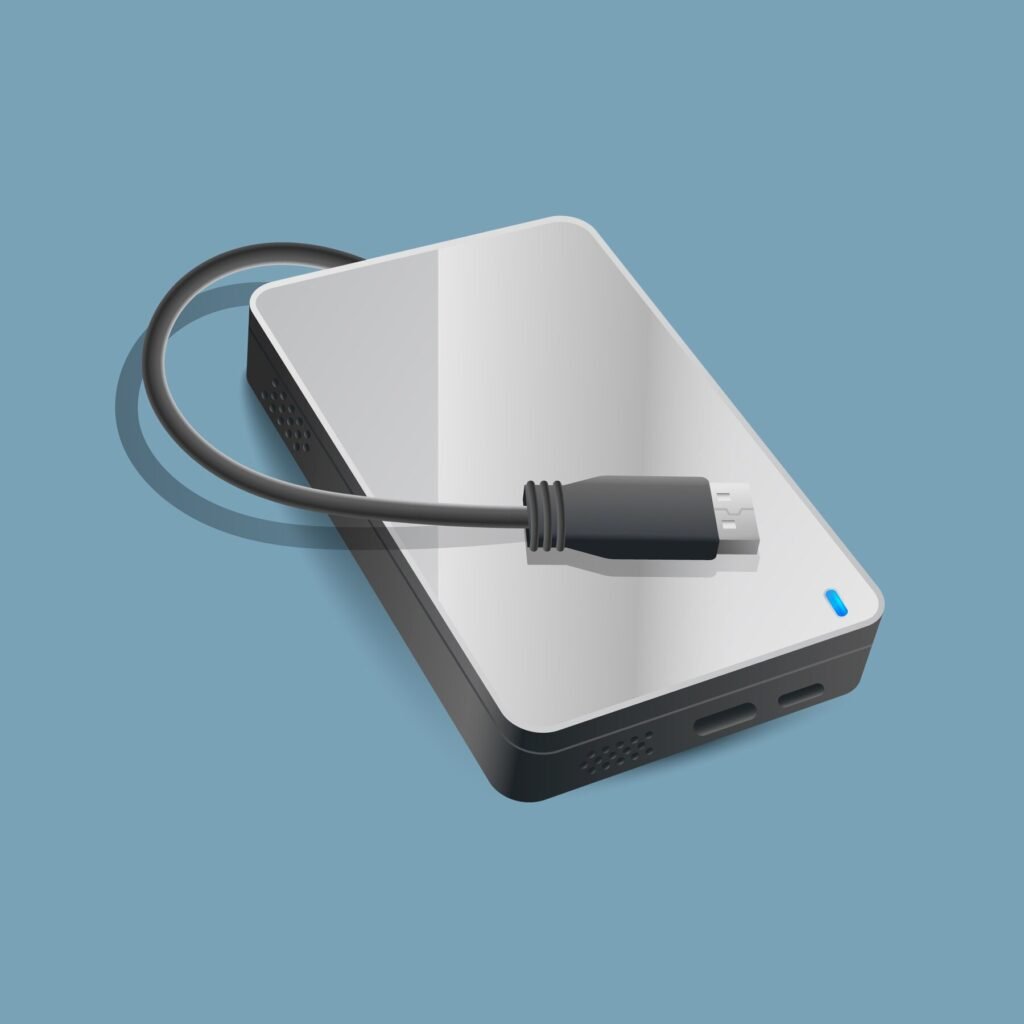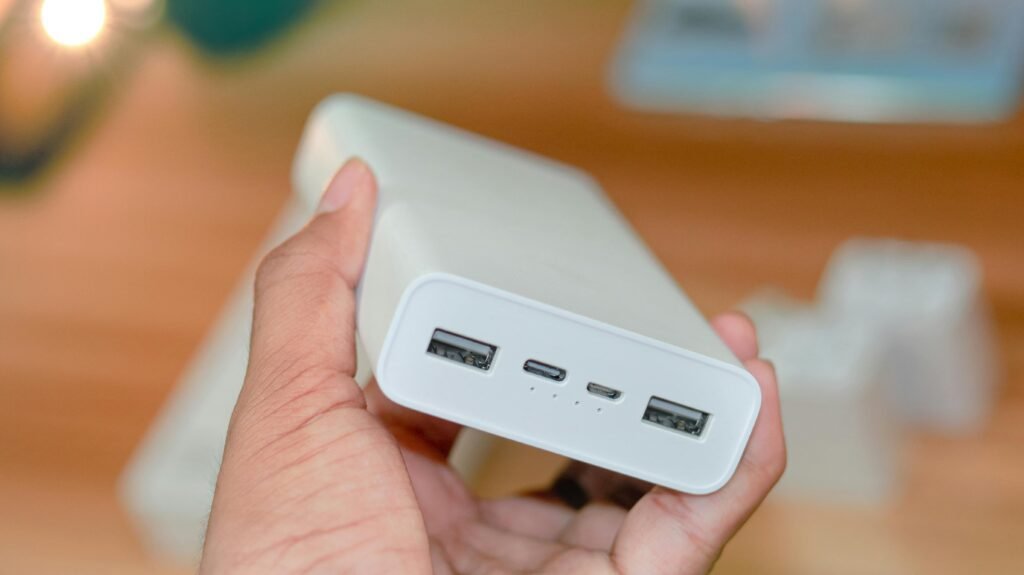How to Choose a Good Power Bank: The Ultimate Guide

“Wondering how to choose a good power bank? Our ultimate guide covers essential tips on capacity, features, and portability to help you pick the best one.”
Choosing a good power bank can be a challenge with so many options available, but understanding a few key factors can help you make the right choice. To select the best power bank, consider factors like battery capacity, charging speed, portability, and compatibility with your devices. Whether you’re traveling, working remotely, or simply need a backup for your phone, these features will ensure that you stay connected and never run out of power when you need it most.
Table of Contents
1. Capacity: How Much Power Do You Need?
The first factor to consider when choosing a power bank is its capacity, usually measured in milliampere-hours (mAh). This determines how much charge the power bank can store and deliver to your device.
- Small Capacity (5000mAh – 8000mAh): Ideal for quick charges, these power banks can fully charge smaller devices like smartphones once or provide a partial charge to larger devices.
- Medium Capacity (10000mAh – 15000mAh): Suitable for charging your smartphone multiple times or charging larger devices like tablets once.
- Large Capacity (20000mAh and above): Best for extended trips, especially if you have multiple devices (like a smartphone, tablet, or laptop) that need charging.
When selecting a capacity, consider how many devices you’ll be charging and the frequency of your charging needs. For instance, if you’re often on long flights or road trips, a larger capacity may be necessary to keep all your devices powered up.
2. Output Power: Faster Charging Matters
The output power of a power bank is typically measured in watts (W) or amperes (A), which determines how quickly it can charge your device. A higher output means faster charging. Look for the following:
- 5V/1A or 5V/2A: Standard charging speed for most smartphones. This will charge your device at a decent rate.
- Quick Charge (QC) or USB-C PD (Power Delivery): These technologies allow for faster charging, especially for modern smartphones, tablets, and laptops. Quick Charge can deliver up to 18W of power, while Power Delivery can go up to 100W, significantly reducing charging time.
If you’re someone who’s always in a rush and can’t afford long charging times, opting for a power bank with Quick Charge or Power Delivery support is a wise choice.
3. Number of Ports: Charging Multiple Devices
The number of USB ports on a power bank plays a significant role, especially if you carry multiple devices. You can find power banks with anywhere from one to four USB ports.
- Single Port: Perfect for individuals who need to charge just one device.
- Dual/Multiple Ports: Ideal for those who need to charge a smartphone, tablet, or even a laptop simultaneously.
Make sure the power bank’s total output can support multiple devices. For example, a 20,000mAh power bank with dual ports might deliver 2.1A on each port, but if it’s too low, it may charge multiple devices slowly.

4. Size and Weight: Portability vs. Capacity
Portability is another essential factor when choosing a power bank. A larger power bank (higher capacity) generally means more weight, so consider how much weight you are comfortable carrying.
- Lightweight Power Banks: Smaller capacity power banks (5000mAh–10000mAh) are compact and easy to carry in your pocket or purse. Ideal for everyday use.
- Heavier Power Banks: Larger power banks (20000mAh or more) can be bulkier, and while they provide more charging power, they might not be the most convenient to carry around, especially for travelers who are trying to minimize their bag weight.
Consider your lifestyle and whether you need a high-capacity power bank for travel or something smaller for everyday use.
5. Safety Features: Protecting Your Devices
Safety is paramount when it comes to charging your valuable devices. A good power bank should come equipped with features that prevent overheating, short-circuiting, overcharging, and over-discharging. These safety features can be found in most modern power banks, but make sure to look for these key aspects:
- Overcharge Protection: This ensures the power bank automatically stops charging when the device is full.
- Short Circuit Protection: Prevents damage if there’s a sudden fault in the device’s charging circuit.
- Overcurrent Protection: Protects your device from receiving too much power, which could damage it.
- Temperature Control: Ensures the power bank doesn’t overheat while charging.
It’s worth investing in a power bank with these features to extend the lifespan of both the power bank and your devices.
6. Brand Reputation and Reviews
When it comes to power banks, not all brands are created equal. Established brands like Anker, Xiaomi (Mi), and Ambrane are known for producing high-quality, reliable products. While lesser-known brands might offer cheaper alternatives, they might not provide the same level of safety, performance, or warranty.
Check online reviews and product ratings to gauge the reliability and durability of a power bank before purchasing. Real user feedback can help you avoid purchasing a subpar product that could fail when you need it most.
7. Charging Speed of the Power Bank Itself
Another important feature to consider is how quickly the power bank itself charges. Many power banks support fast charging via USB-C, which allows the power bank to recharge faster. This is especially helpful if you’re on a tight schedule and need to quickly top up your power bank before heading out.
If your power bank charges slowly, you may find yourself needing to wait hours for it to charge fully, which could be inconvenient if you’re always on the move.
8. Additional Features: Extra Functionality
Some power banks come with extra features that could add value to your purchase. These features can include:
- Built-in Cables: Some power banks come with integrated cables (such as micro-USB or Lightning cables), so you don’t have to carry an extra cable.
- Wireless Charging: Many new power banks support wireless charging, allowing you to charge your devices without plugging them in.
- LED Indicators: A power bank with an LED display or indicator lights shows how much charge is remaining, helping you avoid surprises when you’re low on power.
- Solar Charging: Some power banks come with solar panels, allowing you to charge the bank itself using sunlight, which is useful during outdoor activities or when traveling.
While these features can be convenient, they may increase the price. Assess whether these extra features align with your needs before making a decision.
9. Price and Warranty
FAQ: How to Choose a Good Power Bank
1. What should I look for when choosing a good power bank?
Look for key factors like capacity (mAh), output power (W), portability, the number of charging ports, and compatibility with your devices.
2. How do I determine the right power bank capacity for my device?
Choose a power bank with at least 2x the battery capacity of your device. For example, if your phone has a 3000mAh battery, a 6000-10000mAh power bank would be ideal.
3. What is the ideal mAh capacity for a power bank?
A 10,000mAh power bank is typically a great balance for most users, providing 2-3 full charges for average smartphones.
4. What is the difference between USB-A and USB-C ports?
USB-A is standard for older devices, while USB-C offers faster charging speeds and is commonly used in newer smartphones, laptops, and other electronics.
5. How can I tell if a power bank is fast-charging?
Check for features like Qualcomm Quick Charge or Power Delivery (PD) support for faster charging speeds.
6. Should I choose a power bank with more than one USB port?
Yes, multiple ports are convenient if you need to charge multiple devices at once.
7. What is the best power bank size for portability?
Choose a compact and lightweight power bank for easy portability. Typically, a 10,000mAh model is a good balance of capacity and portability.
8. Is it important to check for safety features in a power bank?
Yes, always ensure the power bank has built-in safety features like overcharge protection, short circuit prevention, and temperature control.
9. Can a power bank charge laptops?
Some power banks are designed to charge laptops. Look for higher-capacity power banks (20,000mAh+) and check if they support Power Delivery (PD) for laptop charging.
10. How do I know if a power bank is compatible with my device?
Ensure the power bank’s output voltage and current match your device’s charging requirements, and check for compatibility with specific charging standards (like Quick Charge or PD).
11. What is the lifespan of a good power bank?
A good power bank should last for about 500-1000 charge cycles, which can typically take 2-3 years of normal use.
12. How long does it take to charge a power bank?
Charging time depends on the power bank’s capacity and input charging speed. A 10,000mAh power bank may take 4-6 hours to fully charge.
Conclusion: Choose Wisely for Your Power Needs
Choosing the right power bank ultimately depends on your unique needs. Whether you need a lightweight option for everyday use or a high-capacity power bank for long trips, understanding the key factors—capacity, output power, ports, size, safety features, and brand reputation—will ensure you make an informed decision. If you’re wondering how to choose a good power bank, focusing on these elements is crucial. By keeping these factors in mind, you can select a reliable, safe, and efficient power bank that will keep your devices powered and ready for action whenever you need them.
Happy charging!